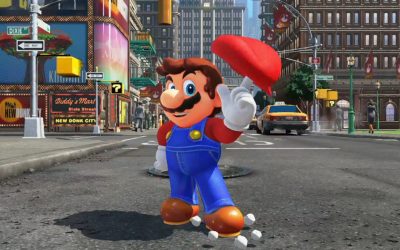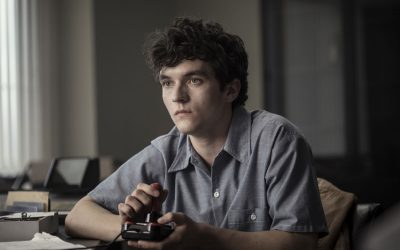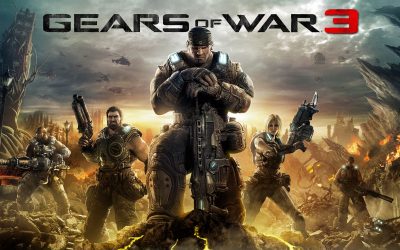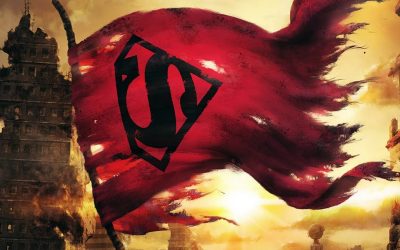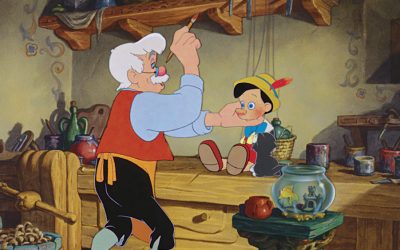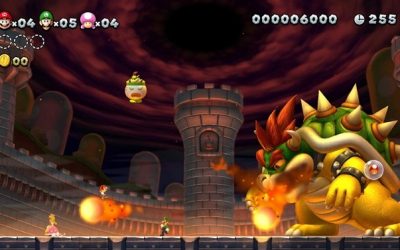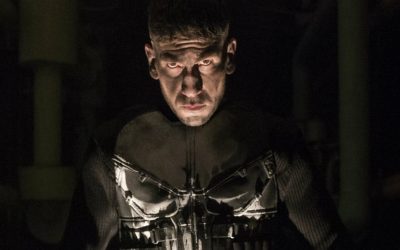
Good News Gaming: saluting the streamers that make millions for charity
In the first edition of our Good News Gaming column, we salute the Games Done Quick event that raised over $2 million USD for charity…
Welcome to the first ever article under our brand new ‘Good News Gaming’ banner. In this hopefully-never-ending series of articles, we’ll aim to amplify the nicer side of the gaming community that maybe doesn’t always get the attention it deserves. First up, an inspiring story of gamers using their passion to help a good cause…
You may have already heard of Games Done Quick, the semi-annual speedrun events held in the USA by the Speed Demos Archive and Speedruns Live communities. All in the name of raising money for charity, this excellent alliance has run 22 events since 2010. The most recent of these was Awesome Games Done Quick 2019, which took place at the Marriott Bethesda North Hotel in Rockville, Maryland from January 6th to 13th 2019.
This time, funds were being raised for the Prevent Cancer Foundation. This charity is based in the USA and is dedicated to the early detection and prevention of cancer. More information on the charity can be found on its official website, which reminds donators in simple terms of what’s at stake here: “Your gift saves lives”, it says prominently on the primary donations page.
Everyone around the globe, geeks included, can relate to that truly horrible feeling of losing someone you love. Raising money to stop that from happening – to save people from cancer, from death, from grief – truly is a noble pursuit.
Some people might run a sponsored race in real life to do their bit to raise money for a charity like this, but for the fine folks behind Games Done Quick – and their legions of followers – that marathon is a digital one. This week-long event saw streamers and viewers coming together to play/watch great games such as Hollow Knight, Portal, Donkey Kong Country, Mario Kart, Majora’s Mask, Dark Souls III and many, many more. Gamers gamed around the clock, with events playing out for a live crowd and loads of online viewers.
The event came to a close with an awesome double-bill: a streamer named Bayleef doing a speedrun of Super Mario Odyssey’s Darker Side on Switch, followed by a streamer named ShinyZeni completing Super Metroid in Reverse Boss Order on the SNES. There’s something incredibly inspiring about gamers coming together, to play games from different eras, all with a common goal: raise money to save lives.
It was, we’re pleased to report, a massive success. During the Super Mario Odyssey speedrun, donations crossed the $2 million USD mark and the crowd went absolutely wild…
The average donation during the event was $51.70, which is not an insignificant amount of cash to part with (especially if you’re a gamer with a long list of titles on your wishlist). And by the time the Super Metroid run was done, a total amount of $2,394,668 USD had been raised…
The grand total for #AGDQ2019: $2,394,668.
Thank you to everyone for supporting this event. We honestly couldn’t have done it without you.
— Games Done Quick (@GamesDoneQuick) January 13, 2019
For comparison purposes, that’s £1.86 million GBP raised by gamers, to help prevent cancer, across one epic week. That’s some absolutely fine work, which is bound to have an impact on a lot of people’s lives. And it was gaming that did it.
Although you don’t have to look far online to find that Games Done Quick has come under scrutiny and been at the centre of several Twitter storms in the past, it’s impossible to deny the honourable results that this charitable event has achieved.
This is proof that the gaming community can be a positive influence in the world. It can be easy to lose sight of that sometimes, with all the vitriol that sneaks into the online discourse, but it’s vitally important to remember: just like anyone else, gamers can save lives, and loads of them banded together last week to do just that. They should, we reckon, be very proud.
You can head on over to Games Done Quick’s website for info on this event and their next ones, or click here to donate to their campaign…
Good News Gaming: saluting the streamers that make millions for charity
In the first edition of our Good News Gaming column, we salute the Games Done Quick event that raised over $2 million USD for charity…
Welcome to the first ever article under our brand new ‘Good News Gaming’ banner. In this hopefully-never-ending series of articles, we’ll aim to amplify the nicer side of the gaming community that maybe doesn’t always get the attention it deserves. First up, an inspiring story of gamers using their passion to help a good cause…
You may have already heard of Games Done Quick, the semi-annual speedrun events held in the USA by the Speed Demos Archive and Speedruns Live communities. All in the name of raising money for charity, this excellent alliance has run 22 events since 2010. The most recent of these was Awesome Games Done Quick 2019, which took place at the Marriott Bethesda North Hotel in Rockville, Maryland from January 6th to 13th 2019.
This time, funds were being raised for the Prevent Cancer Foundation. This charity is based in the USA and is dedicated to the early detection and prevention of cancer. More information on the charity can be found on its official website, which reminds donators in simple terms of what’s at stake here: “Your gift saves lives”, it says prominently on the primary donations page.
Everyone around the globe, geeks included, can relate to that truly horrible feeling of losing someone you love. Raising money to stop that from happening – to save people from cancer, from death, from grief – truly is a noble pursuit.
Some people might run a sponsored race in real life to do their bit to raise money for a charity like this, but for the fine folks behind Games Done Quick – and their legions of followers – that marathon is a digital one. This week-long event saw streamers and viewers coming together to play/watch great games such as Hollow Knight, Portal, Donkey Kong Country, Mario Kart, Majora’s Mask, Dark Souls III and many, many more. Gamers gamed around the clock, with events playing out for a live crowd and loads of online viewers.
The event came to a close with an awesome double-bill: a streamer named Bayleef doing a speedrun of Super Mario Odyssey’s Darker Side on Switch, followed by a streamer named ShinyZeni completing Super Metroid in Reverse Boss Order on the SNES. There’s something incredibly inspiring about gamers coming together, to play games from different eras, all with a common goal: raise money to save lives.
It was, we’re pleased to report, a massive success. During the Super Mario Odyssey speedrun, donations crossed the $2 million USD mark and the crowd went absolutely wild…
The average donation during the event was $51.70, which is not an insignificant amount of cash to part with (especially if you’re a gamer with a long list of titles on your wishlist). And by the time the Super Metroid run was done, a total amount of $2,394,668 USD had been raised…
The grand total for #AGDQ2019: $2,394,668.
Thank you to everyone for supporting this event. We honestly couldn’t have done it without you.
— Games Done Quick (@GamesDoneQuick) January 13, 2019
For comparison purposes, that’s £1.86 million GBP raised by gamers, to help prevent cancer, across one epic week. That’s some absolutely fine work, which is bound to have an impact on a lot of people’s lives. And it was gaming that did it.
Although you don’t have to look far online to find that Games Done Quick has come under scrutiny and been at the centre of several Twitter storms in the past, it’s impossible to deny the honourable results that this charitable event has achieved.
This is proof that the gaming community can be a positive influence in the world. It can be easy to lose sight of that sometimes, with all the vitriol that sneaks into the online discourse, but it’s vitally important to remember: just like anyone else, gamers can save lives, and loads of them banded together last week to do just that. They should, we reckon, be very proud.
You can head on over to Games Done Quick’s website for info on this event and their next ones, or click here to donate to their campaign…
The games industry doc that inspired Black Mirror: Bandersnatch
Louisa Mellor
Jan 15, 2019
2014 documentary From Bedrooms To Billions was invaluable preparation for the cast of interactive Black Mirror episode Bandersnatch…
Black Mirror’s surprise end-of-year release Bander…
Gears Of War 3 nearly featured Drake and Minnie Driver
Rob Leane
Jan 14, 2019
Rap star Drake and iconic actress Minnie Driver were both set for roles in Gears Of War 3…
Here’s one of those ‘Oh, what could have been!’ news stories that makes you want to pop over t…
Rick And Morty is coming to Channel 4
Season 4 will begin on Channel 4 soon, it’s been announced…
Channel 4, E4 and All 4 have sewn up a deal with Adult Swim which will see loads of popular comedy shows come to Freeview and streaming in early 2019, among them the always-amazing Rick And Morty.
Season 4 of the subversive animated series will get underway soon on Channel 4, and although there’s not yet been a premiere date set for it yet, E4 plans to air seasons 1-3 ahead of the launch so that UK viewers can catch up this February.
Meanwhile, you’ll be able to stream tons of other Adult Swim shows through All 4, including Robot Chicken, The Eric Andre Show, Mr. Pickles, Aqua Teen Hunger Force, Tim And Eric Awesome Show, Great Job!, Squidbillies, The Venture Bros and Hot Streets, among others. Wew!
Over 300 episodes of Adult Swim’s classic series will be welcomed to the UK with open arms, we reckon, and even if you’ve seen them before, they’re definitely the type of thing you get sucked into watching again and again, especially late at night when you’re channel surfing, so we’re happy to hear this news.
The many deaths of Superman on screen
As 1993’s The Death Of Superman completes its journey to the screen, we look at the various adaps of the Man of Steel’s not-so-final battle
This feature contains major spoilers for Batman V Superman: Dawn Of Justice and Justice League, among other Superman films and TV shows.
Superman has died before and he will probably die again. And yet, despite having been adapted for the screen before, the release of The Death Of Superman and its sequel Reign Of The Supermen (which will screen in UK cinemas in a special double feature this week) marks the end of a long journey through development hell for one particular version of the Man of Steel’s demise.
DC Comics’ penchant for Elseworlds, “What If” imaginary stories, and other out-of-continuity escapades mean that writers have been killing off the seemingly invulnerable hero for a long time. For instance, Superman #149 tells an entertaining imaginary story in which Lex Luthor formulates a cure for cancer, seemingly just to gain Superman’s trust and get close enough to eventually murder him.
Although that kind of story is better written and executed, the iconic ‘Death Of Superman’ story is the 1992-3 arc of the same name, which attracted an unprecedented amount of mainstream media coverage when it was first revealed. In terms of story, the arc saw Doomsday, a monster contrived purely for this story, arriving on Earth and making short work of the Justice League before going mano-a-mano with Superman. In front of the Daily Planet building, the two finally exchange lethal blows.
January 1993’s Superman #75, an issue comprised entirely of splash pages, sold more than six million copies as a result of the hype surrounding it. Unsurprisingly, sales fell off for the rest of the arc. If everyone had kept reading, they’d have found out about the emergence of four would-be Supermen, ranging from John Henry Irons’ Steel to the alien Eradicator. That’s before the real Kal-El makes his inevitable return, because comics.
Published during a period in which stories were partly been driven by the booming speculators’ market for comic books that featured momentous stories or the first appearance of particular characters, The Death Of Superman is the definitive blockbuster arc of the time. And that has definitely been reflected in the disproportionate amount of times it has been adapted since then.
The trouble is, for all that it’s an iconic story, it’s not an especially interesting one. The demise of one of the most beloved and recognisable characters in fiction at the hands of a brand-new monster, which the writers specifically created to knack him, over the course of a four-issue brawl still feels deeply uninspired.
Still, more than 25 years since it was published, the arc’s status as a landmark has been cemented in the Superman canon, and with that status, there have been several attempts to adapt the story for the screen. Some came to fruition, some spectacularly did not, but in all cases, we have to wonder – what does it mean to kill Superman?
Death and Returns
Certainly, when Warner Bros bought the film rights to Superman back from producers Alexander and Ilya Salkind in 1993, they were looking for a hit to match 1989’s Batman. With Superman #75 so blatantly in the pop culture consciousness at the time, the project labelled Superman: The New Movie quickly became Superman Lives, the definitive tale of development hell in modern motion picture history.
As detailed in the excellent 2015 documentary The Death Of Superman Lives – What Happened?, the big-budget project would have used the death and return of Superman as the start of a fresh new take on the character. Counter-intuitive as that seems, it also had to be “toyetic”, the dreaded made-up adjective that turned Batman & Robin into Batman & Robin.
With Tim Burton set to direct and Nicolas Cage signed up to star, the project was ultimately cancelled just three weeks before production was set to start. Having languished in pre-production for years, the project had already cost Warner Bros millions at the point when they decided to cancel it, meaning that they also had to honour pay-or-play contracts for Burton ($5 million) and Cage (a whopping $20 million) for not making the film.
After a period of courting different takes on the origin story and even developing the earliest version of a Batman versus Superman movie, Warner eventually greenlit 2006’s Superman Returns, which adheres more to the pre-existing film canon. The film was warmly received upon release and it washed its face at the box office, but was still said to have “underperformed”. Then again, its reported $300 million budget included all of the development costs of the previous years as well.
Doomsday
It’s not surprising to note that all of the different takes on Superman Lives were fairly loose in adapting the story. Kevin Smith notably wrote a draft that fastidiously integrated elements like Doomsday and the Eradicator, but it’s also a distinct story from the comic itself. Popular villains Lex Luthor and Brainiac appeared in most of the drafts of Superman Lives, usually manipulating events from the sidelines.
This followed in the first animated adaptation too. As the vanguard of DC’s direct-to-DVD animated original films, 2007’s Superman: Doomsday has to fit a 75-minute running time, so it’s got a good excuse for not having much of Doomsday in it. However, it also dispenses with Steel, Eradicator and the rest of the funky bunch, by having a single Luthor-created clone of Superman emerge instead.
Affecting the look and feel of the Bruce Timm-produced cartoons while also changing the voice cast and upping the content to a PG-13 rating, the film does at least have a borrowed sense of the world in which these events happen. As the makers of the live-action film eventually discovered, it’s folly to try and start a fresh new take on Superman in which the hero dies at the end of act one.
While Doomsday is a staggeringly dull creature in the pages of the bestselling comic where he originated, the character provides enough of a blank slate for various Superman media to use outside of the main thing it was designed to do. To that end, prequel shows Smallville and Krypton have both used Doomsday outside of a death-and-return story, with the former basically turning the character into Glory from Buffy season 5, in a body-share with Sam Witwer’s Davis Bloome.
‘Do you bleed?’
Even Zack Snyder, whose faithful adaptations of 300 and Watchmen were picture-perfect next to the comics that inspired them, cherry-picked from The Death Of Superman when it came to Batman V Superman: Dawn Of Justice. Borrowing its title fight from Frank Miller’s The Dark Knight Returns, another bestselling comic series but one with a much better story, Snyder’s film has a lot going on in it. That’s why the third act introduction of Doomsday feels like a hat on several other hats.
In this iteration, the monster is reimagined as a homunculus of Luthor and General Zod’s DNA. Introduced in the final half-hour, the part-Kryptonian final boss was one of the least praised aspects of a film that wasn’t massively celebrated to start with. But Doomsday gonna Doomsday, and at the end of a CG-heavy battle, Henry Cavill’s Kal-El takes an elbow spike to the heart.
Even more bafflingly, the trailers revealed that Doomsday would be in the film well in advance of release, so this wasn’t a surprise. Aside from showing that the two title characters eventually put aside their differences, it’s a massive spoiler because unlike in, say, Smallville, it’s a film in which one of the main characters has already spent most of the movie trying to kill Superman.
There were many reasons to walk out of Batman V Superman feeling sad, but no one can argue that the film had anything close to the cultural impact that the original comic did. Granted, you only get to kill Superman for the first time once in any medium, but as far as live-action movies go, there’s a feeling that they’ve already had their chips.
Here, Superman’s demise is a means to an end, as Snyder intended for it to spur a remorseful Batman to come out of isolation to unite the Justice League in the sequel. As conceived, Justice League would be a two-part epic that saw Superman return to help the newly formed League stave off a prophesied invasion by Darkseid.
Beset by unimaginable production difficulties, Justice League clearly isn’t the film it was originally intended to be. Although nobody was especially happy with what came out, there’s an effort to make Cavill’s Superman more personable than in the previous films, an effort which is unfortunately marred by his digitally shaved jaw.
During pre-production, Snyder decided against having Supes wear the comics-faithful black version of the super-suit, which was briefly glimpsed in Man Of Steel. Even though the finished film initially goes down the “Pet Sematary” route of having Superman come back wrong and attack our heroes, the film at least does a better job of making us glad he’s back than Dawn Of Justice did of making us sad that he was gone.
An iconic story?
In a way, that’s the nub of the problem with The Death Of Superman in retrospect. It’s affecting to see the classic superhero meet his end, but it can’t be repeated after a point where we know that death isn’t permanent for him.
Some readers called the whole story a publicity stunt once Superman was resurrected at the end of the arc. If you read and enjoyed the comic and felt the impact of that story, that probably seems reductive. But at the very least, it feels as if the story’s elevation to iconic status over the last quarter of a century has been fuelled more by the desire to capture lightning twice than by the need to tell a classic story.
Looking back at the comic’s release though, it must be seen that its bestselling status was the product of morbid curiosity, rather than an indicator of its quality as a story. While Superman’s apparent invulnerability is one of the most complained-about aspects of his character in terms of story stakes, we’ll take that over the certainty that any injury is only temporary, up to and including death.
The fact that he dies and returns doesn’t make him more human. It makes him more like Jesus. Even putting aside how Moses is the far more fitting biblical analogue for Superman’s origin, it’s not so compelling to watch filmmakers and producers attempt to pull the same trick again and again.
Following Superman: Doomsday and Batman V Superman, The Death Of Superman was the third screen adaptation of the story in little more than a decade. That’s not to say that you can’t tell a good story in which Superman dies (as anyone who has read Grant Morrison’s All-Star Superman will attest), but it feels as if there’s been this crazy drive to humanise Superman by making him physically vulnerable, rather than focusing on his personality.
At the very least, it’ll be exciting to see what Reign Of The Supermen brings to the DC Animated Universe canon, as the first proper adaptation of the “return” part. But as to the preceding bit of the story, it’s plain to see that the best, most relatable screen versions of Superman have been the alive ones.
Paul King exits Disney’s live-action Pinocchio film
The hits just keep on coming, as Disney hunts for a new director…
Beloved Paddington director Paul King is no longer attached to direct Disney’s live-action Pinocchio movie, according to the project’s cinematographer, Seamus McGarvey.
“I don’t think it’s a secret anymore, but the film has been cancelled over the holidays, over Christmas,” McGarvey revealed to Discussing Film. “The director basically pulled out of the film, for um, family reasons. Disney are trying to find a new director, but yeah I read those reports that Tom Hanks and all those other people, but yeah, they’re trying to get it going.”
Tom Hanks had supposedly been circling the role of Geppetto in the film over Christmas, but whether he’s still up for playing the part now that it’s lost another director is anyone’s guess.
Back in 2017, Sam Mendes was set to helm Pinocchio for Disney, but he also dropped out around five months after he was first touted for the job. Before that, Warner Bros. was trying to get the wheels turning on its own live-action take, with Ron Howard replacing Paul Thomas Anderson on a feature that Robert Downey Jr. was planning to play Geppetto in.
News of King’s departure comes just a few months after Crimson Peak director and goth dad Guillermo del Toro announced that he’s pressing ahead with his own stop-motion musical version of the classic story about the wee puppet – known to dabble in a spot of pathological lying now and then – who just wants to be a real boy.
Presumably, we’ll see one of these films in the near-ish future (er, maybe not the Warner Bros. one).
In the meantime, Paddington 3 anyone?
New Super Mario Bros. U Deluxe review: a 2D treat that flourishes with friends
Mario and co. are back in the side-scrolling habit, as New Super Mario Bros. U Deluxe hits the Switch…
When New Super Mario Bros. U was unleashed on the Wii U back in 2012, it was met with a warm response and became one of the best-selling titles on the short-lived console. Six years later, it’s been ported over to the already-more-popular Nintendo Switch, with a couple of new additions. But does the game still hold up?
Short answer: yes, New Super Mario Bros. U Deluxe is every bit as playable as its predecessor. And, as an added bonus, the rejigged game now comes with New Super Luigi U bundled in as standard, meaning that you get 164 levels for your money.
This vast array of levels showcases a great deal of imagination on the part of director Masataka Takemoto and his team of designers. There is a nice amount of variety between the stages, with the snowy segment of the map looking particularly impressive. Other bits don’t shine as brightly, and the first few boss fights are very repetitive, but the fun factor never lets up and you’re rarely stuck in one place for long. There are some terrific twists on expectations, too – levels that aren’t fully illuminated, doors that lead nowhere, coin trails that shepherd you towards death – that will keep you very much on your toes.
Also, the difficulty is pitched at winningly varied levels: if you want to test yourself, New Super Luigi U (which is playable at any point from the main menu) offers challenging remixes of the main game’s levels that will properly stretch your dexterity; but if you want an easy ride, or a suitable game for kids to play, the addition of Toadette and Nabbit to the main game’s playable roster (one of the upgrades this Deluxe port has brought) means that basically anyone can pick this up and have a good time. Nabbit in particular, who’s impervious to attacks, feels like a deliberate attempt to keep very young players engaged.
And if you do have a young gamer you’d like to introduce to the 2D side-scrolling world, New Super Mario Bros. U Deluxe has plenty to offer: you can switch into co-operative multiplayer mode at any point during the main story, or pop over to the main menu to compete in the ‘Play with Mii’ mode that spans time trials, coin battles and other quirky challenges. It’s when you play with other people that this title really comes into its own: whether you’re working together or battling against one another, the game’s easy-to-learn nature means that anyone can have a go and hold their own.
It must also be said, since the Switch is more properly portable than the Wii U was, that there is a certain thrill to be found in playing this home-console-worthy Super Mario Bros instalment on the go. Racing to finish a level before you arrive at work makes the commute fly by, for instance, and the graphics look just as sharp in portable mode as they do on the telly. (At some points, you could even argue that they look better shrunk down.)
Despite all the easy-going entertainment on offer, however, there is a sense that perhaps this game doesn’t quite earn the Deluxe tag that’s been added to its title. The going rate for this game is £43, which will surely seem steep to anyone that already owns the Wii U version (especially considering that Rayman Legends and the recent Spyro and Crash Bandicoot remasters can generally be found for less than thirty quid). Does the addition of Nabbit, Toadette (who can transform into the meme machine Peachette with the help of a super crown), portability, a flying squirrel power-up and New Super Luigi U really make this a full-price offering that’s a properly Deluxe experience?
That’ll be a matter of personal opinion, which is likely to differ depending on whether you already played this on Wii U, but there’s no denying that this is a terrific 2D treat with plentiful replayability and some excellent multiplayer options. Deluxe may be a stretch, but this is still a delight.
New Super Mario Bros. U Deluxe is out now.
The Punisher recap: the story so far
Frank Castle is back to dispense his own brand of justice in The Punisher. As a refresher, here’s what happened in season 1. Spoilers…
Obviously, contains massive spoilers for The Punisher season one.
The Punisher is back for a second and likely final season at Netflix. It’s been over a year since we last saw Frank Castle in action, so ahead of season two, here’s a look at what happened in his debut solo outing and where the characters – at least, the ones we’ll see again – were left…
Plot
The first season of The Punisher sees Frank Castle continuing his hunt for the men who killed his family, after discovering that the man he previously dealt with – his former commander, Colonel Schoonover – was part of a much wider conspiracy inside the CIA. Drawn back into a vigilante life, he finds himself tracking down “Agent Orange” and his former brother-in-arms, Billy Russo, who are both wrapped up in it.
Along the way, Frank partners with “Micro”, another victim of the conspiracy who faked his own death to focus on bringing it down. As Frank and Micro partner up, they are tailed by government agents including the obsessive but brilliant Dinah Madani, who is clean – though her bosses may not be.
As you’d expect, Frank eventually takes down Agent Orange and his subordinates, culminating in a final battle which sees Russo and Frank face off in the funfair location where Frank’s family was originally killed. After beating Russo and smashing his face into a mirror, Frank delivers him to Madani whose investigations have put her on Frank’s side.
With the conspiracy beaten, Micro is free to return to his family, and both he and Frank are pardoned by the authorities. Assuming, of course, that Frank stays out of trouble.
No prizes for guessing how that’s going to go…
Returning characters
Frank Castle
We last saw Frank attending a PTSD support group, having acknowledged that he was… unwell. Of course, part of the problem was that having achieved some kind of justice for his family, he just didn’t know what to do next with his life. Whatever happens next, you can be sure Frank probably won’t be pursuing justice for his family as his primary goal, but it remains to be seen whether this rather optimistic ending will be undone as he spreads his war on crime to everyone else, or whether he’ll be dragged back into a fight against his will.
Billy Russo (Jigsaw)
When we met Billy he was the head of a “private security” firm called Anvil and living the sweet life free from his past. Once a close friend of Frank, he’s set to be one of the main villains of this series, even though he starts it comatose. Russo has lost everything he treasured – his job, his good standing and his looks – it’s safe to say he’s going to blame Frank for that.
Dinah Madani
Although she helped bring down the conspiracy, Medani paid a lot for her crusade. Hooking up with Billy Russo certainly didn’t help when she found out he was bad – especially because he killed her partner, Agent Sam Stein and then tried to shoot her in the head. If and when Russo wakes up, Madani’s going to be ready to take him in. Will she be keen to partner up with Frank, however? Probably not, since she was the one who got him his new life. That’s not something you can keep doing for a person after all…
Karen Page
Having already developed a rapport with Frank after he came into conflict with Daredevil, newspaper reporter Karen Page helped Frank out several times in the past and is sure to do the same again in Punisher season two. Of course, Karen was fired from her newspaper in Daredevil season three, and assuming Daredevil isn’t going to continue anywhere else this could be the character’s final appearance.
Curtis Hoyle
One of Frank’s few loyal friends from the military, and one of the few people who knew he was alive when the rest of the world didn’t, Curtis also ran the PTSD group Frank attended. Frank saved his life multiple times, including from Russo. Again, when Russo wakes up and can’t find Frank, it’s likely he’ll go to Curtis first. He might even just go there to settle a score…
The Punisher season 2 will debut on Netflix on Friday 18th January.
The Punisher recap: the story so far
Frank Castle is back to dispense his own brand of justice in The Punisher. As a refresher, here’s what happened in season 1. Spoilers…
Obviously, contains massive spoilers for The Punisher season one.
The Punisher is back for a second and likely final season at Netflix. It’s been over a year since we last saw Frank Castle in action, so ahead of season two, here’s a look at what happened in his debut solo outing and where the characters – at least, the ones we’ll see again – were left…
Plot
The first season of The Punisher sees Frank Castle continuing his hunt for the men who killed his family, after discovering that the man he previously dealt with – his former commander, Colonel Schoonover – was part of a much wider conspiracy inside the CIA. Drawn back into a vigilante life, he finds himself tracking down “Agent Orange” and his former brother-in-arms, Billy Russo, who are both wrapped up in it.
Along the way, Frank partners with “Micro”, another victim of the conspiracy who faked his own death to focus on bringing it down. As Frank and Micro partner up, they are tailed by government agents including the obsessive but brilliant Dinah Madani, who is clean – though her bosses may not be.
As you’d expect, Frank eventually takes down Agent Orange and his subordinates, culminating in a final battle which sees Russo and Frank face off in the funfair location where Frank’s family was originally killed. After beating Russo and smashing his face into a mirror, Frank delivers him to Madani whose investigations have put her on Frank’s side.
With the conspiracy beaten, Micro is free to return to his family, and both he and Frank are pardoned by the authorities. Assuming, of course, that Frank stays out of trouble.
No prizes for guessing how that’s going to go…
Returning characters
Frank Castle
We last saw Frank attending a PTSD support group, having acknowledged that he was… unwell. Of course, part of the problem was that having achieved some kind of justice for his family, he just didn’t know what to do next with his life. Whatever happens next, you can be sure Frank probably won’t be pursuing justice for his family as his primary goal, but it remains to be seen whether this rather optimistic ending will be undone as he spreads his war on crime to everyone else, or whether he’ll be dragged back into a fight against his will.
Billy Russo (Jigsaw)
When we met Billy he was the head of a “private security” firm called Anvil and living the sweet life free from his past. Once a close friend of Frank, he’s set to be one of the main villains of this series, even though he starts it comatose. Russo has lost everything he treasured – his job, his good standing and his looks – it’s safe to say he’s going to blame Frank for that.
Dinah Madani
Although she helped bring down the conspiracy, Medani paid a lot for her crusade. Hooking up with Billy Russo certainly didn’t help when she found out he was bad – especially because he killed her partner, Agent Sam Stein and then tried to shoot her in the head. If and when Russo wakes up, Madani’s going to be ready to take him in. Will she be keen to partner up with Frank, however? Probably not, since she was the one who got him his new life. That’s not something you can keep doing for a person after all…
Karen Page
Having already developed a rapport with Frank after he came into conflict with Daredevil, newspaper reporter Karen Page helped Frank out several times in the past and is sure to do the same again in Punisher season two. Of course, Karen was fired from her newspaper in Daredevil season three, and assuming Daredevil isn’t going to continue anywhere else this could be the character’s final appearance.
Curtis Hoyle
One of Frank’s few loyal friends from the military, and one of the few people who knew he was alive when the rest of the world didn’t, Curtis also ran the PTSD group Frank attended. Frank saved his life multiple times, including from Russo. Again, when Russo wakes up and can’t find Frank, it’s likely he’ll go to Curtis first. He might even just go there to settle a score…
The Punisher season 2 will debut on Netflix on Friday 18th January.

